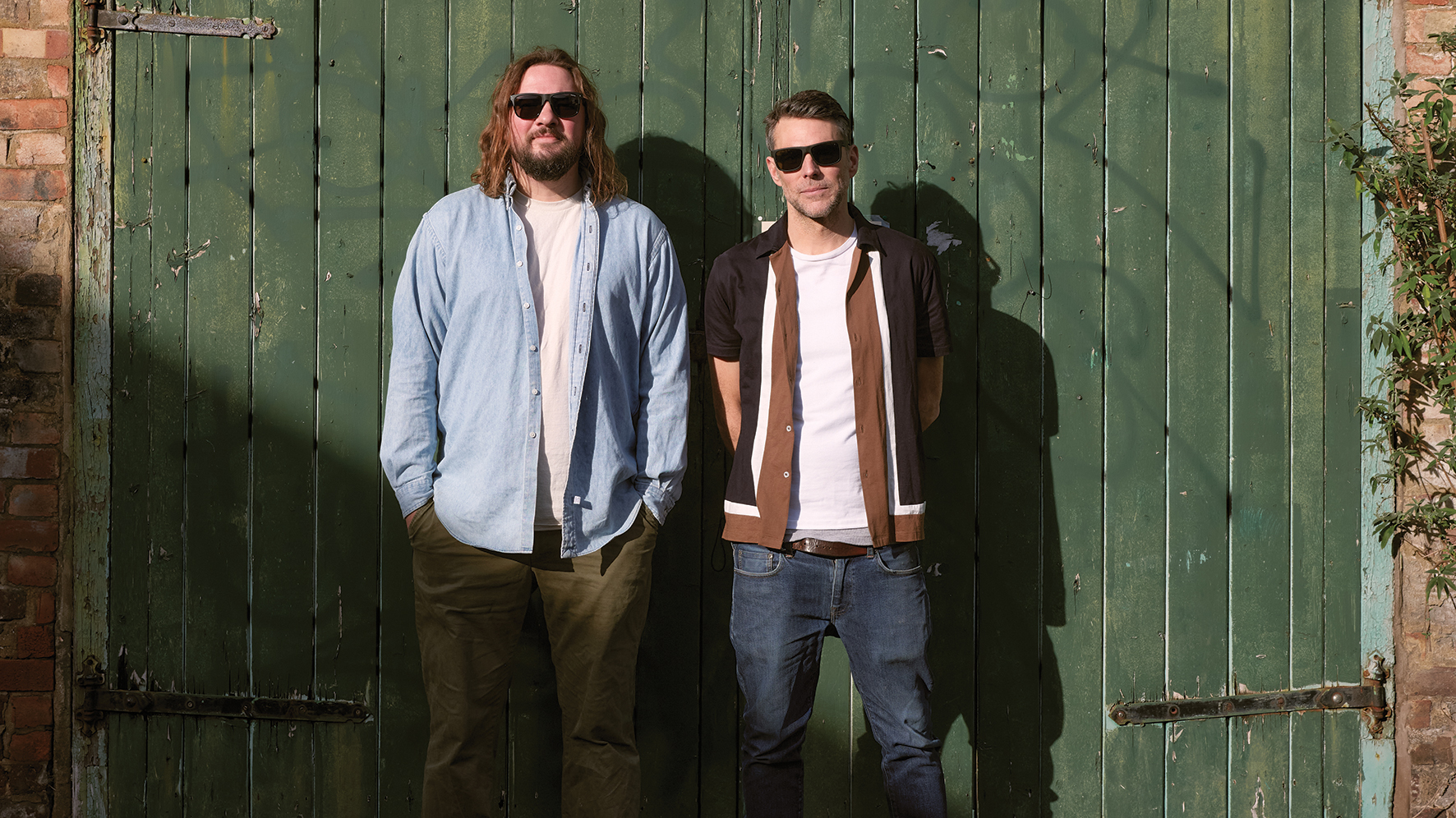
Having been impressed by material aired while presenting the show Loose Joints for Soho Radio, Tom Findlay contacted producer James Alexander Bright to ask if he’d like to work on ideas for Groove Armada’s ninth album Edge Of The Horizon (2020). Although Findlay’s writing partner Andy Cato embraced their input, the duo would later team up to rework leftover material for the debut EP Slow Dance.
Encouraged by strong support for the title track from national radio, Bright & Findlay then decided to expand their partnership, writing new tracks for the soon-to-be-released album Everything Is Slow. Interweaving Bright’s lo-fi approach with Findlay’s longstanding experience as a producer, the LP is a satisfying mix of ’70s rock and Balearic electronics, permeating with light drum machines, chorus-laden synths and soulful vocals.
Tom, what made you excited enough to reach out to James and initiate this collaboration?
Tom Findlay: “As Groove Armada, Andy [Cato] and I were writing Edge Of The Horizon, so I was just getting my head back into the idea of writing and collaborating. I was also fronting a show at the time on Soho Radio called Loose Joints and listening to a lot of new music. I’d played a few of James’s tracks on the show before, but Tiger’s Roar really spoke to me, so I reached out to James via Twitter and he seemed really enthusiastic for us to work together.
“We wrote a lot for the Edge Of The Horizon record and took bits back to Andy who’d be into some of them but not others – the first single Slow Dance was something we’d initially written together but was too funky for Andy, so James and I took the other bits away and decided to work on them together.”
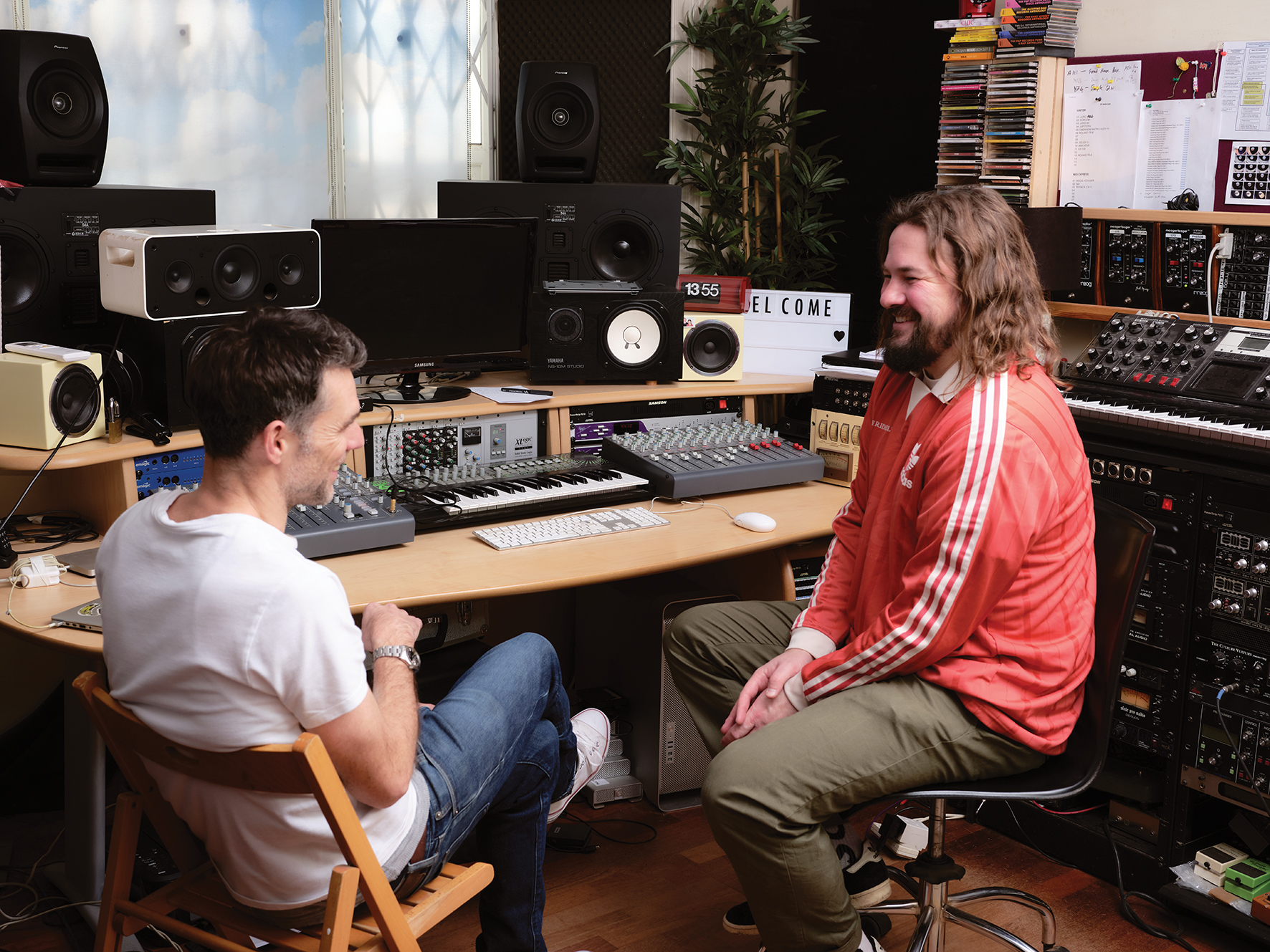
James, were you surprised to find Tom reaching out to you?
James Alexander Bright: “It was a bit of a mind fuck at first – I thought someone was trying to prank me! I was using Twitter to look at the latest tunes coming out and saw that Groove Armada had followed me. Then Tom asked if I’d give him a follow back and we got chatting. It was all very exciting.
“I’ve been making music for quite a while, albeit at a lot less successful rate than Tom – no stadium sell-out shows for me! But I was in a band called Portico Quartet that had been Mercury Music-nominated and that’s where I learned to play guitar, keys and do gigs. Since then I’ve been in all sorts of folk, funk and hip-hop groups. Most recently, I’ve been collaborating with producers like Adam Scrimshire of Wah Wah 45s and Albert’s Favourites.”
Comparing studios, yours seems to be more pick-up-and-play than Tom’s?
JB: “Tom’s got some beautiful synths, which he uses to great effect, but mine’s much more ramshackle. I pick up bits of gear off mates and have always found the lo-fi aesthetic very pleasing to the ear. I’ve self-pressed and released stuff on cassette, which draws nicely into the releases put out by our label Athens of the North, which has this whole reissue/lost gem vibe. Tom’s always had a good ear for stuff, whereas I’m more of a throw-it-at-the-wall-to-see-what-sticks kind of guy and we meet in the middle quite well.”
TF: “It sounds weird but I’m at an odd point in my life where I’m coming to the end of my musical career in some ways and really at peace with that. I still make music as a hobby, but work as a therapist for three days a week, which is very involving. In terms of my studio, I’m still stuck in some weird early noughties time loop and have had to decide whether to rip everything up and start again or ease into my retirement with the same kit. Even my desktop computer is a vintage one – I can’t upgrade to any software at all.”
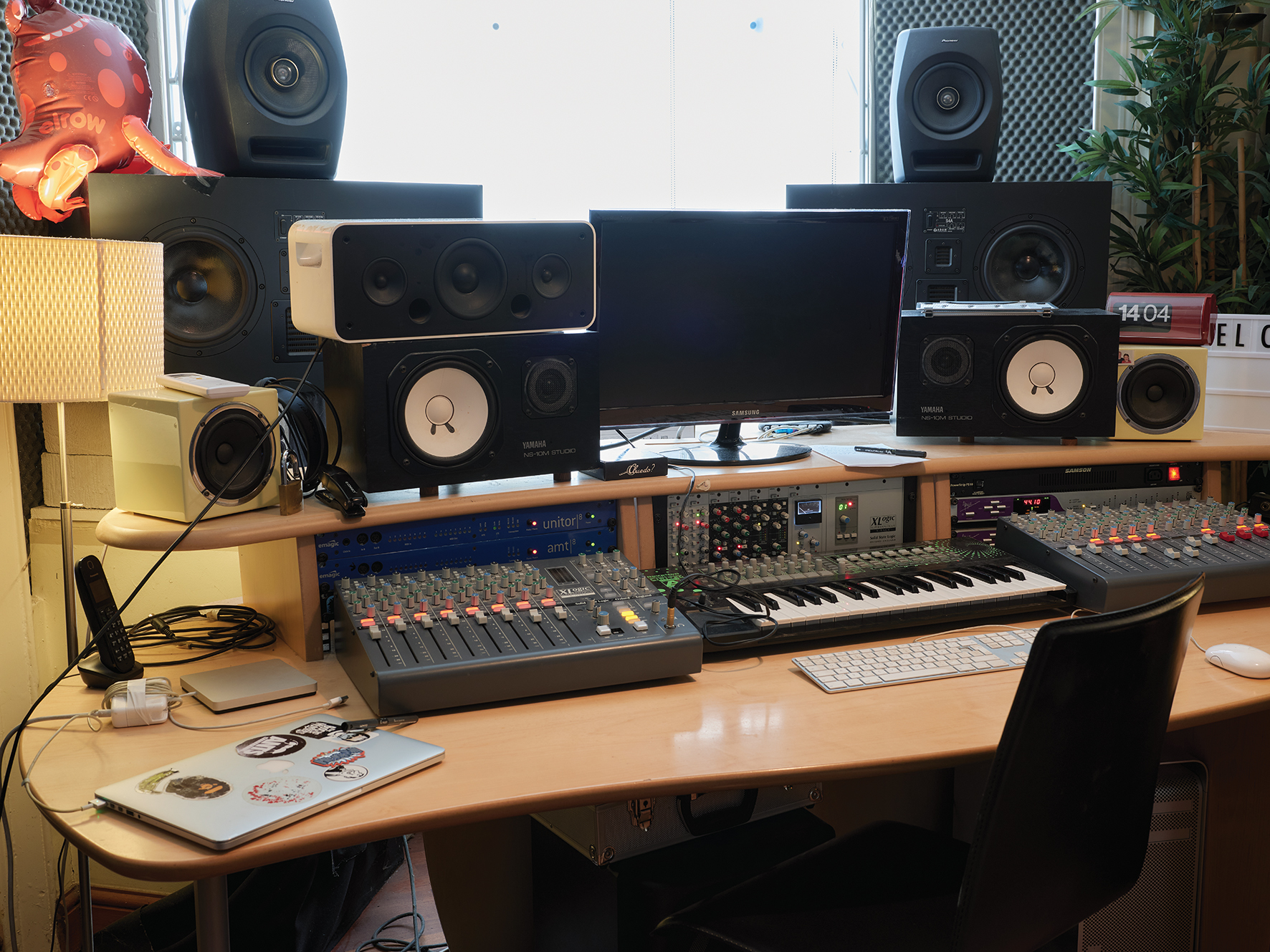
Is Edge Of The Horizon going to be the last Groove Armada LP?
TF: “Andy and I did a live run recently that was really fun. We sold out pretty much everywhere we played in the UK, Australia and New Zealand, but although playing live still feels exciting and fresh it had to come to an end at some point.
“Towards the end of last summer we did Latitude, but I can’t see us performing live or writing albums again because Andy spends most of his time doing regenerative farming. We are putting out some house records for Defected and will be DJing quite a bit this summer and next, but we’re definitely winding down the album thing.”
You mentioned the release of the Bright & Findlay EP Slow Dance back in 2021. Were you testing the water for an album?
TF: “The track was initially written for Groove Armada, but we changed it quite radically, and then James had a couple of other ideas that led to us creating the EP. At that point we were definitely testing the water, but the reception was really surprising. Slow Dance got played more on BBC 6 Music than anything Groove Armada released with Edge Of The Horizon and that gave us the confidence to continue.”
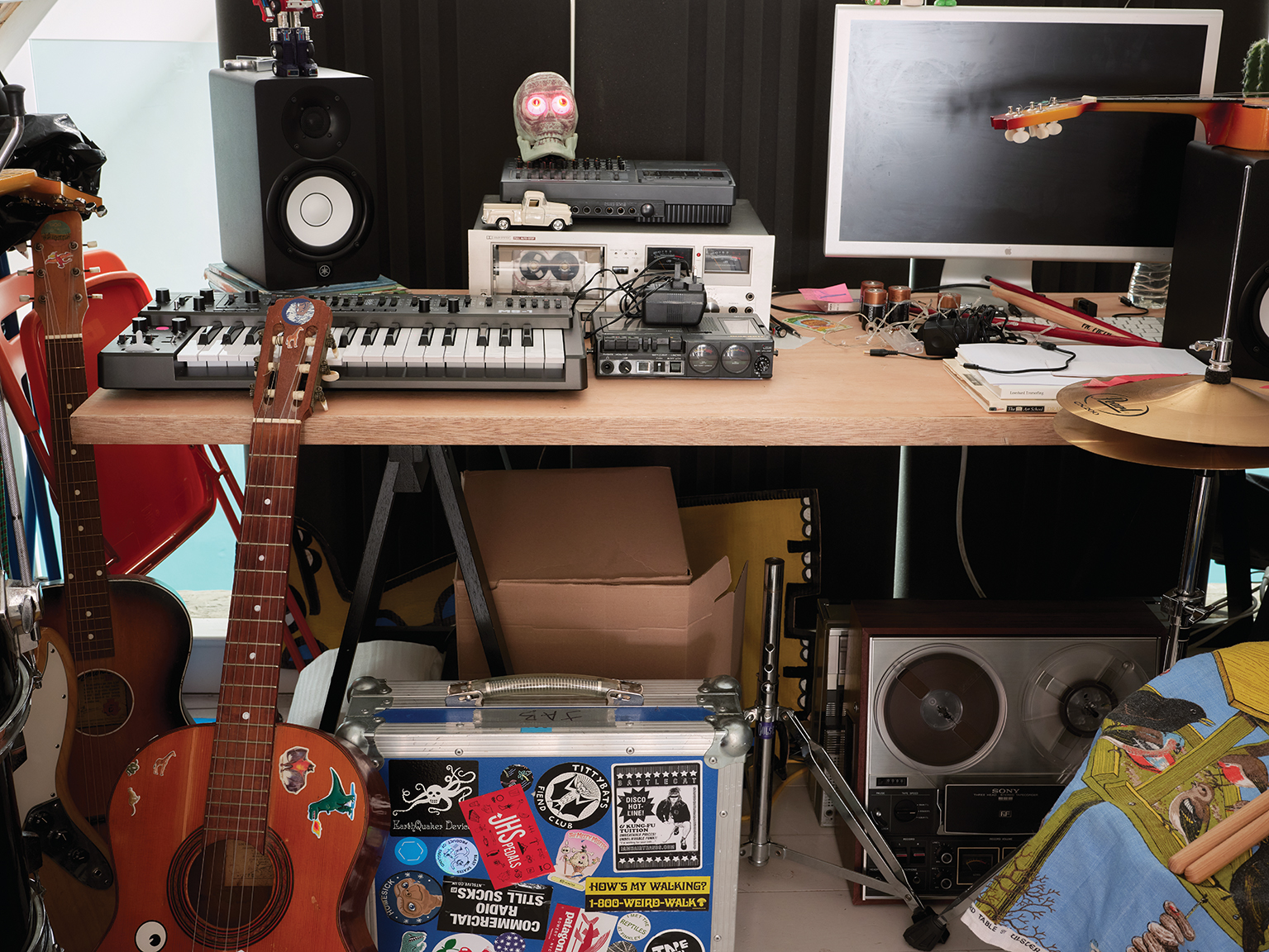
Where did you go from there?
JB: “That first EP gave us a sense of direction, but we were still trying to work out how the music would sound if we were to do more of it. We had an idea about meeting in the middle to create this machine soul, lo-fi boogie kind of vibe. We don’t spend a lot of time together in the studio; I prefer working remotely and send stuff back and forth.
“We both work really quickly that way too, which made things easy once we knew the direction we wanted to go in. Tom is the only person I’ve ever met who can make 20 versions of one song and be good at it, whether that’s folk, hip-hop, funk or a club version. He’s got a vast imagination for layout, structure and all the nuances that bring a track to life.”
Artists seem to be a lot more comfortable working remotely. No doubt technology is a big facilitator of that?
TF: “On early albums, Andy and I would be sat shoulder to shoulder for 12-18 months and drive each other mad. Eventually, we started working remotely on records like Soundboy Rock in 2007. Now we tend to work together in my studio in very short 24-hour bursts and that works really well, but I also love the process of working with James.
“Getting ideas from him remotely is a bit like unwrapping a Christmas present and he’s always very positive, which is different to Andy – he’s a bit more of a Yorkshireman [laughs]. I can see something in every idea that James sends, and with the album being called Everything Is Slow you can guess that it’s quite intimate. I’ll tend to work on stuff late at night with my headphones on and send it to James, which he hopefully loves before we start tightening things up. It brings the best out of both of us.”
You’ve mentioned the album being a love letter to ’70s rock. Would I be correct to assume that applies to its organic sound?
TF: “There’s that, but James was also talking about the machine soul sound from the ’80s that we both love. That’s very present on Slow Dance, but what makes that interesting is when you combine it with James’s vocals on tracks like Hello In The Dark (Standing) where he’s channelling a bit of The Doobie Brothers or Michael McDonald and does that really beautifully. If Bright & Findlay has a sound, it’s probably the ’80s boogie production vibe that we both love, twinned with sunshine ’70s vocals. That’s what’s distinct about us.”
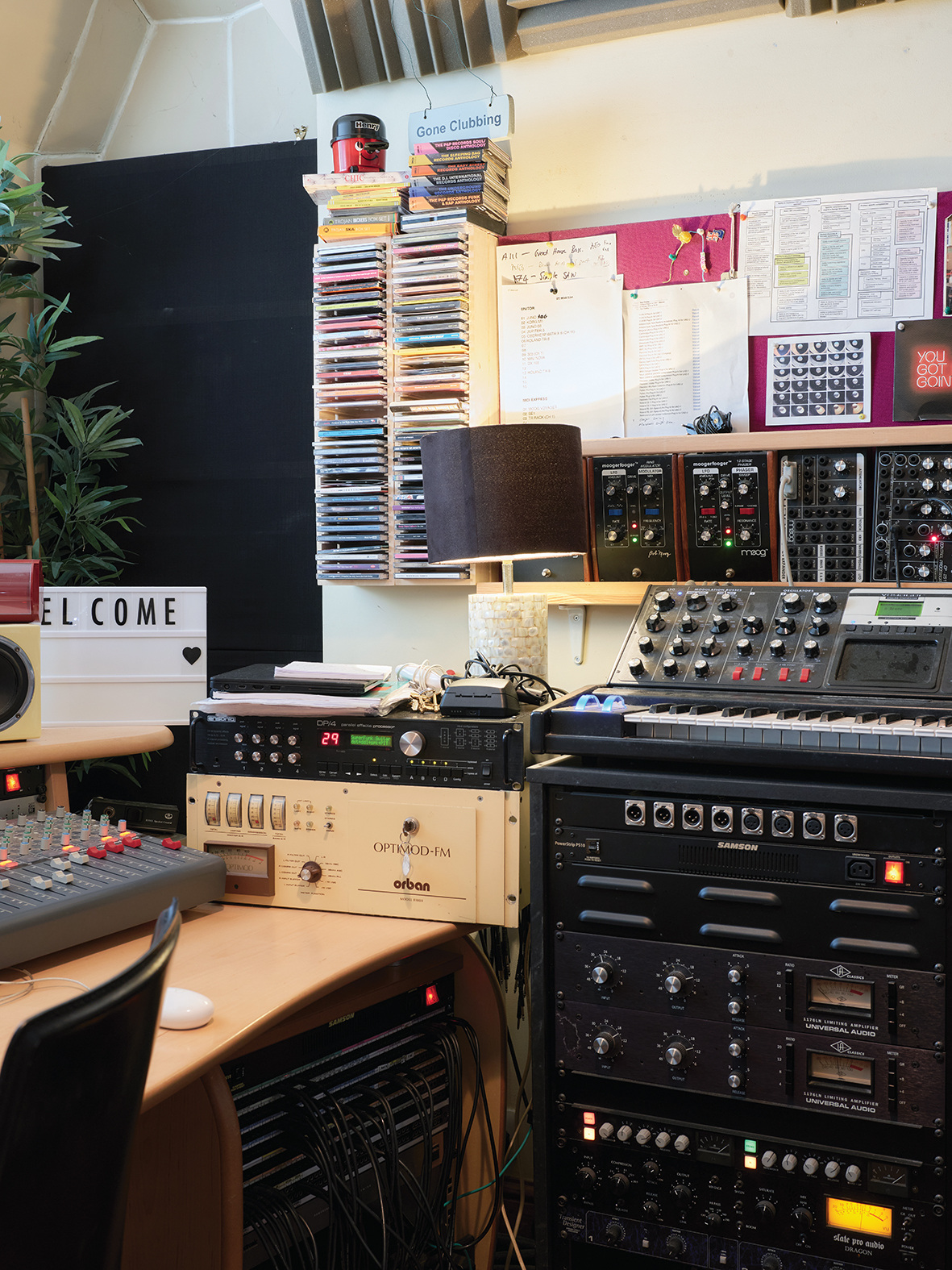
James, what sort of ideas would you send over to Tom initially?
JB: “On the technology side of things I’ll turn to anything from my old Akai MPC1000 to the Koala Sampler on my phone and just record voice notes or spend time using dictaphones recording sounds as textures to turn into synth samples. I’m very much into texture and love sound degradation mixed with Tom’s hi-fidelity element, so I’ll send him anything from rickety voice notes right through to fairly fleshed out ideas.
“Some people can’t see past how something initially sounds, but Tom has open ears. For example, I demoed by singing into a microphone on my laptop late at night and Tom chopped up bits from those vocals and kept them on the track Leave It All Behind from the first EP. That was another one that got rinsed by 6 Music and made it onto the album proper.”
TF: “James mentioned throwing stuff at the wall, but he’s much more gifted than that. He brings ideas in quite a raw form and I try to squeeze that into how I hear music as a dance producer, which involves tightening things up, using sequenced beats and trying to find a balance between what’s he’s expressing and making it work in a way that’s disciplined and relatable. Some of the stuff that James and I are really united about is the lo-fi approach of hearing hiss on a tape. The more we did that, the more I wanted it.”
Was James’s lo-fi approach new to you, and did you therefore have to avoid trying to sculpt the perfect sound?
TF: “The track Flowers has tons of headphone rattle in the background, which gives it a certain vibe, but James had to help me pull back on over-embellishing certain things because that’s a bad habit of mine. I also ended up using quite a lot of different samples for the beats, but by the end of the album I’d used the same kick and snare on everything because I kept coming back to the idea of wanting a unified sound.”
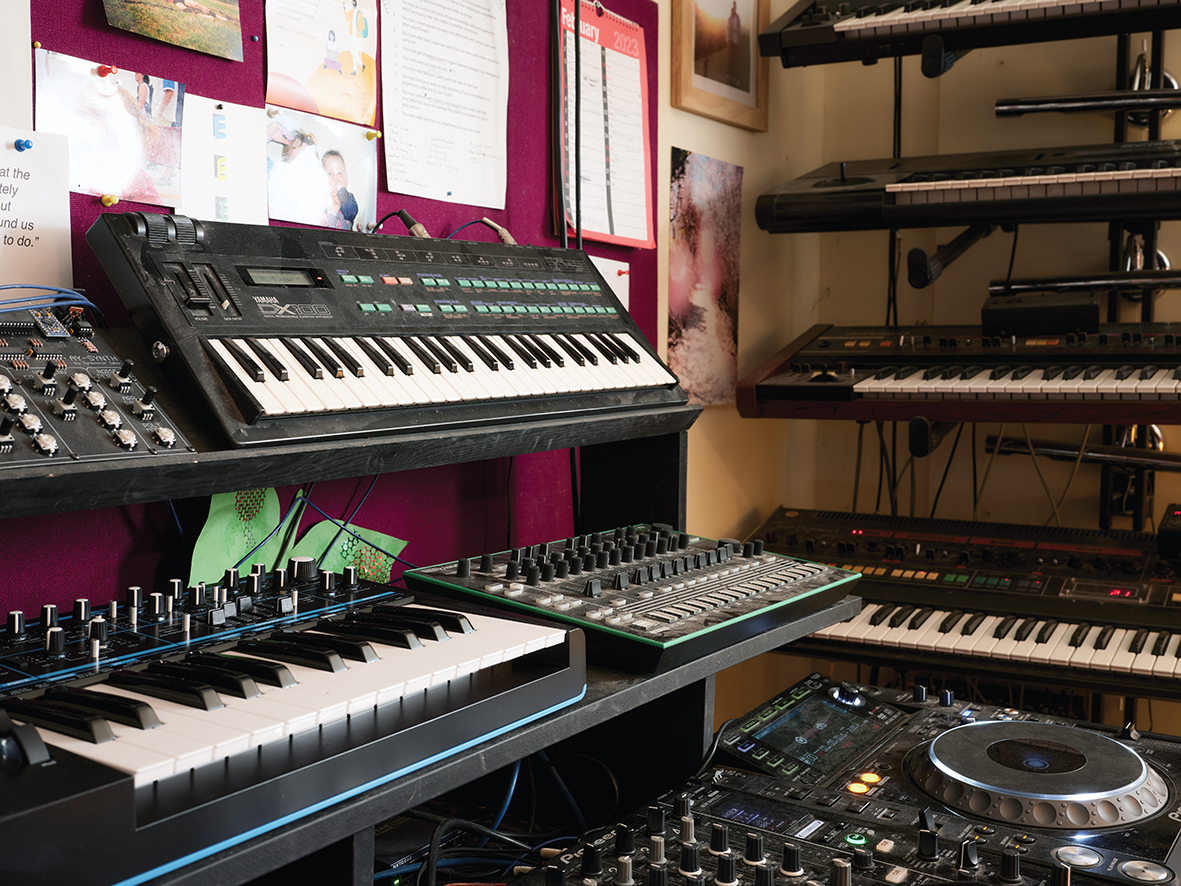
The track When I Look Into The World is particularly refined. What instrumentation did you use on that one?
JB: “It started as a solo track of mine but didn’t fit in with my last record, and I wasn’t sure how Tom would react to hearing all the whistling and acoustic guitar parts. I’d also put a crazy bassline on it and some badly-recorded drums, but Tom elevated the track massively. He added a strong, firm groove to the bass and some brass and strings. It eventually became one of my favourite tracks on the album.”
Can you give us some insight into your lo-fi approach to recording during the demo process?
JB: “I love bands like Unknown Mortal Orchestra who pass everything through cassette decks to get that sound degradation, and I really like how Dâm-Funk has a warm looseness to his sound yet it still sounds great on a big system. I’ve got a lot of half-broken tape machines, keyboards and old gear that mates have passed on to me or were discovered on eBay or Gumtree, but I also have some nice high-end stuff.
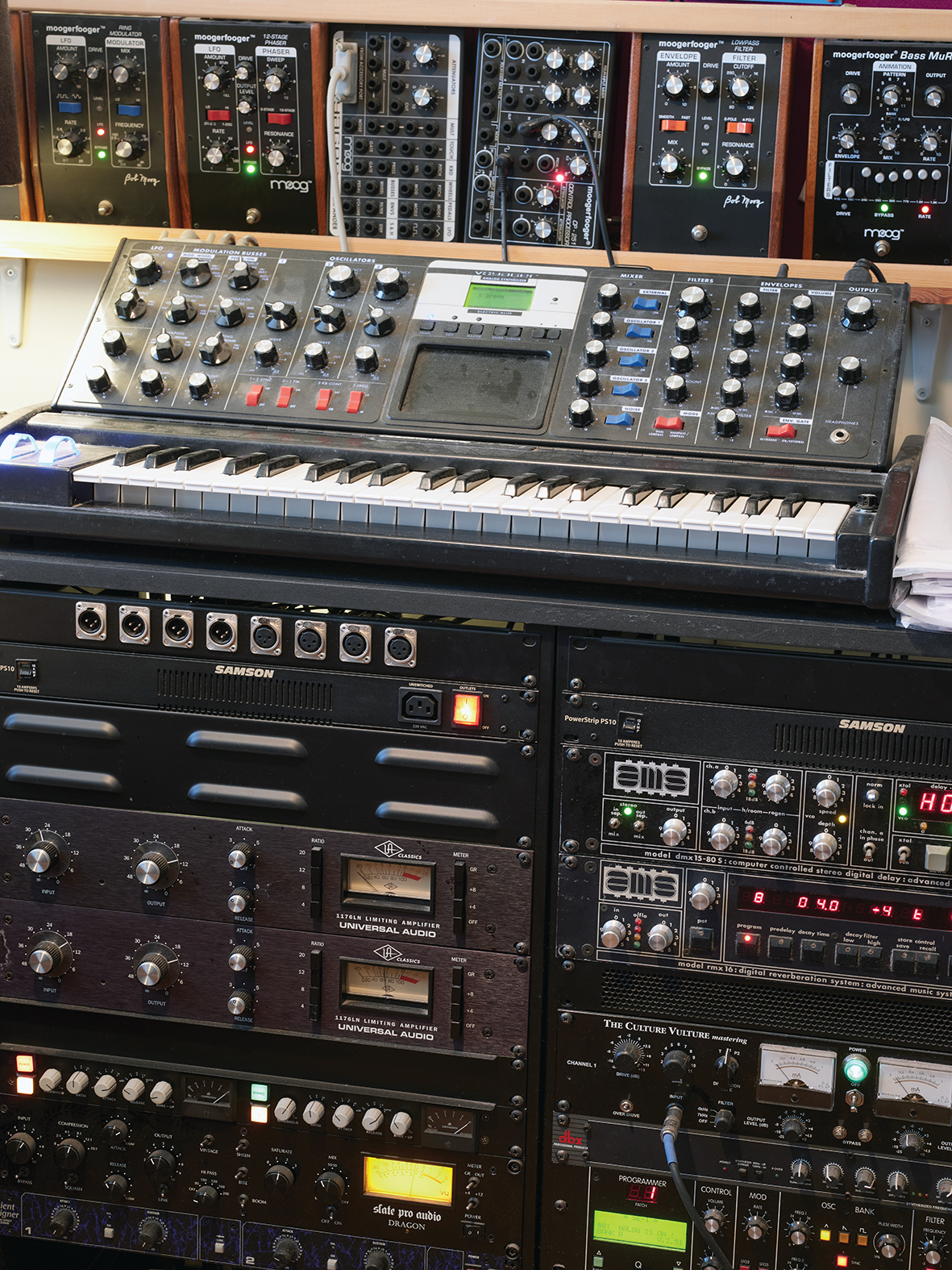
“I’ve got an AKG C4 and a bunch of other mics for recording vocals and guitars properly. Sometimes I’ll run them straight into Logic using an Apogee converter and other days straight to one of my old 8-track reel-to-reels, but a lot of stuff passes through tape because I’ve always liked the sound of authentic tape compression.”
Tom, you seem to have a ton of hardware outboard. Do you prefer using that to processing in-the-box?
TF: “I use a Universal 1176 for a lot of the compression on vocals and there’s a nice mono converter that I always put my bass through called the Dragon. It’s valvey and warm and I plug that into a Culture Vulture.
“I’ve also got a few effects units from AMS in Burnley. They made an amazing non-linear tape delay that has a beautiful reverb for when you want your snare to sound quite gated and tight. With Bright & Findlay, I’ve basically reduced myself to using one kick and snare sample, one sound from each of the synths and all the same outboard compressors and reverbs.”
JB: “I think that way of working is a good idea because it ties all the sounds together. Unless you’re very lucky, production is a process and it takes time to find a sound that you’re happy with that represents you as an artist. That sound is what gives you your identity.”
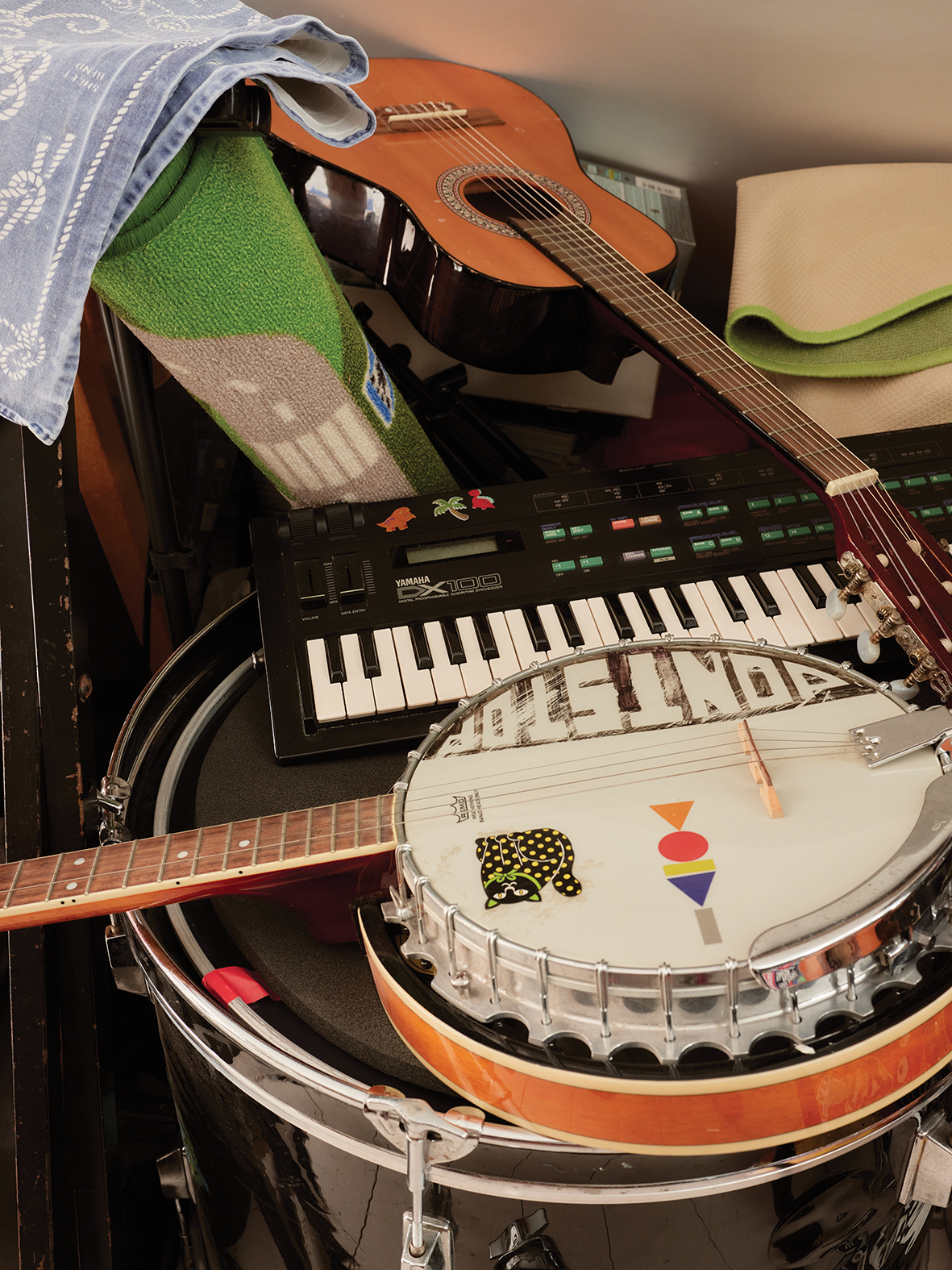
TF: “It makes me sound like an old bastard, but when we did the first Groove Armada records like Northern Star and Vertigo, we had one sampler with 32 seconds of sample time and one live effects unit, which forced you to be a bit more creative and settle on things quicker. With the amount of choice you have now, you can spend hours and hours on stuff and sometimes you need to be forced to compromise.
“At the same time, I listen to dance records now that are really whizzing and made with a lot of software-based stuff, but I have no idea how they’re doing it and wouldn’t mind learning a few new tricks on that front. If there’s been a weakness of Groove Armada it’s that we’ve rarely settled on a sound, and tracks can sound wildly different across the same record. In my mind, I wanted to do something with James that was cohesive and has a strong sound, and I’m really happy we’ve achieved that.”
So despite your great collection of synths, you didn’t use too many of them on the record?
TF: “I knew the sort of sounds that James was getting exciting about and was leaning towards the Moog end. I’ve got an old Oberheim Matrix 6 that has a pad sound that’s all across the record, especially on Hello In The Dark, but it’s a real bugger to programme even after you’ve warmed it up and blown all the dust off [laughs].”
What exactly is the Orban Optimod-FM Model 8100A?
TF: “I was chatting to Nick Littlemore of Empire of the Sun and he told me it was the best compressor in the world, but you have to get it modified so you can use it. I’ve had that done now to make it a bit less extreme, but it’s still completely mental and incredibly intense!”
Bright & Findlay's Everything Is Slow is out now via Athens of The North.







